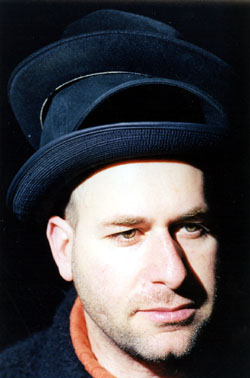|
Conventional wisdom says: Don’t quit your day job yet. Stick it out until you are sure that the opportunities and cash is plentiful enough. Then quit. It could be a long time. Let’s face it: day jobs suck. Or do they? I’ve recently spoken to 5 composers who have not only loved their day jobs but felt that they have actually enhanced, influenced and informed their composing. Perhaps among artists, attitudes toward work are changing. During my last job, one of my co-workers was a famous novelist who made scads of money lecturing, writing articles and publishing books. When I asked her why she was working 10-7 as an online strategist instead of being the glamour queen that she was, she replied that being home all day alone drove her crazy; she missed the interaction with other people (which fueled her writing in the first place) and felt like the world was passing her by.
Innovative artists, on the other hand, generally don’t find themselves in the glamorous spotlight too often and if they do, it’s often only after working for a long time in obscurity. While their more conservative peers often find themselves swamped with commissions for everything from operas to car commercials, those who fall on the more experimental side of things usually have to do something to make ends meet. Unfortunately, history has confirmed this: in the late 1950s, well into his career and just before fame struck, John Cage worked as a designer for the textile firm of Jack Lenor Larsen; Virgil Thomson scribbled as chief music critic for the New York Herald Tribune; Charles Ives raked in the dough as an insurance exec; and Marcel Duchamp served his time dealing art and living off a family fortune for decades until the culture finally caught up with him in the 1960s.
While it might sound like a drag, the composers I spoke with have created their own agendas and made choices that seem to suit them. In fact, some of these composers could very well make a living off their own compositions, but stuck with their day jobs for reasons other than money: Morton Subotnick‘s 4 decade-long infatuation with electronic music and computers has led him to writing software, CD-ROMs and websites that teach kids how to read and compose music; David Soldier‘s day job as a scientist directly influences his conceptual-based musical projects; Joan La Barbara, by performing other’s compositions, has led her to develop a vocabulary of her own; Stephen Vitiello, had he not worked in the artworld, would have still been a rock musician instead of a noted improvising experimentalist; and David Behrman did god’s work by helping his fellow avant-gardist’s recordings to find their way into the hands of the mainstream back in the 60s when he did a stint at Columbia records as a producer.
I suppose my old-fashioned notion of what constitutes an artist’s pride made me approach my subjects gingerly. With each interview, I almost apologized for prying into the nuts and bolts of one’s financial life and made sure to ask if they felt absolutely comfortable discussing this subject with me. No one seemed to mind and several were surprised at my timidity. In the end, I was taken aback by the strange reversal of common knowledge; what emerged from this series of interviews is an overall positive attitude about employment, rather than the usual tired notions of work as enslavement. But in hindsight it makes sense: all of the composers I interviewed refuse to see their work – both art and employment – in conventional terms. In the end, I discovered that it was I who was holding on to dogged notions of what employment means.












